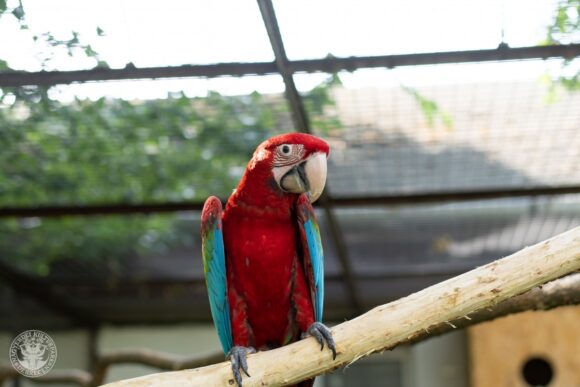Following the reproduction in 2019, the Debrecen Zoo’s large population of macaws, now numbering 13 individuals, has grown with new members this year, as three green-winged macaws flew out of the safety nest where they were raised by their parents for the past three months. Their sex will only be determined later, but their health and appetite are impeccable; yet cautiously, but with increasing curiosity, they accept the delicacies offered by their caregivers. They become fully independent in at least a month and a half, but are already visible in the company of their parents on the parrot line of the institution.
Indigenous to the lowland and lower mountain forests of South America, the green-winged macaw (Ara chloroptera) is the second-largest parrot species in the world with a wingspan of up to 125 cm. In addition to fruits and berries, nuts are emphasized in his diet, which is also essential for him in human care. He stays with his partner for the rest of his life, though he typically doesn’t spend every year; it forms a nest in the cavity of palm trees or in a rock fissure. It is an extremely intelligent and well-taught bird, which we can experience up close at the Debrecen Zoo during the regular aratren training during the day or on Friday evening walks. What is new is that those who are interested in this charismatic race can now capture the experiences gained during their visit in front of the institution’s new thematic photo wall.
In addition to habitat loss, illegal catches for commercial purposes are also threatened, with the species being listed on the Red List of the World Conservation Union (IUCN) and in Annex II to the Washington Convention (CITES). in the Annex.
debreceninap.hu



















